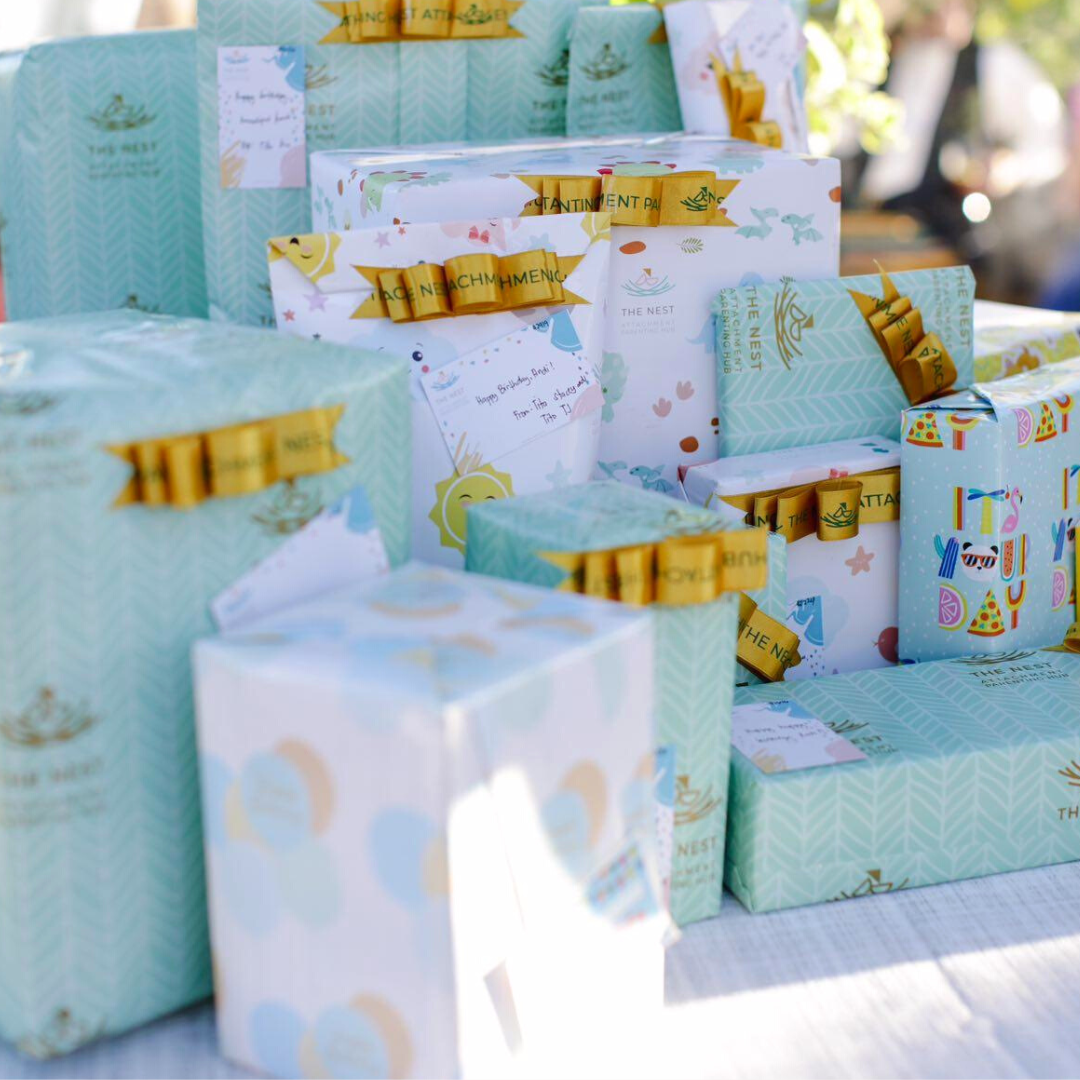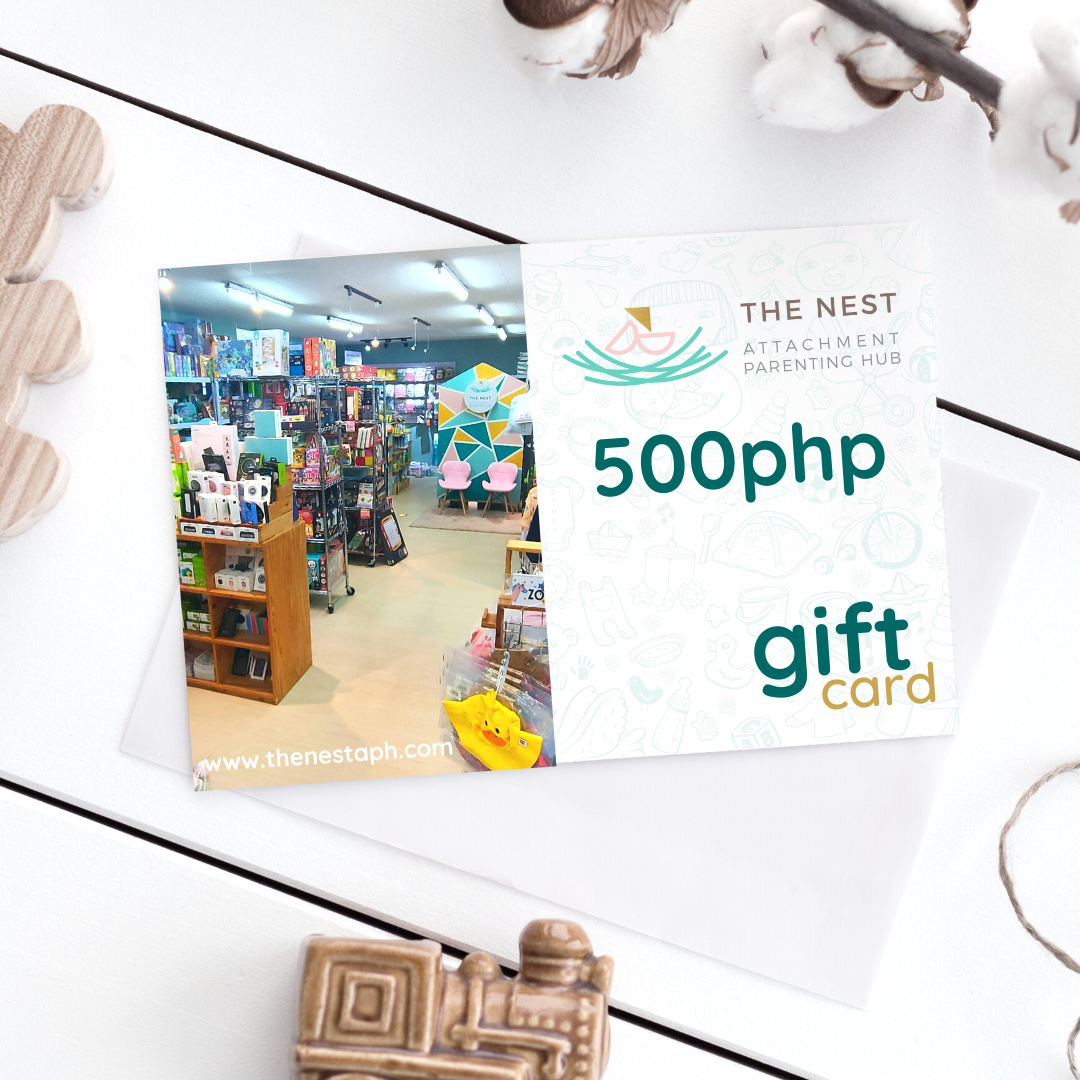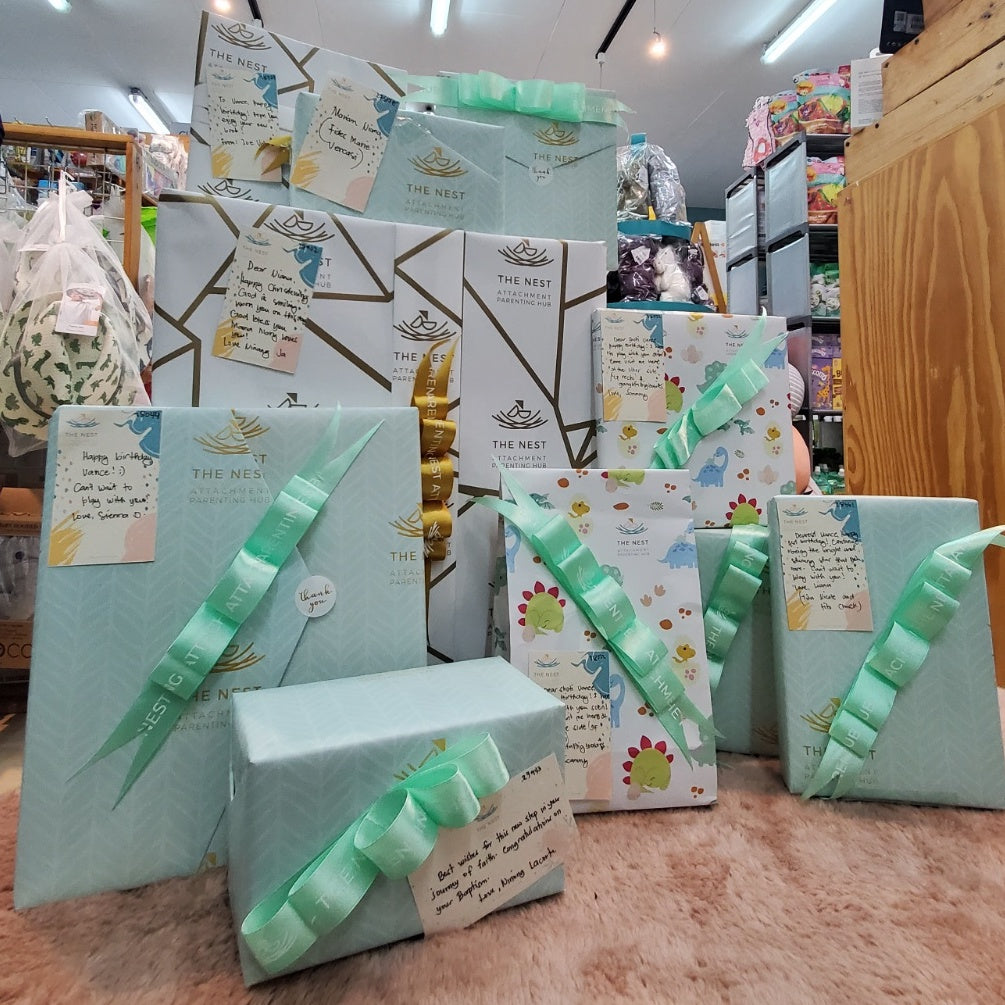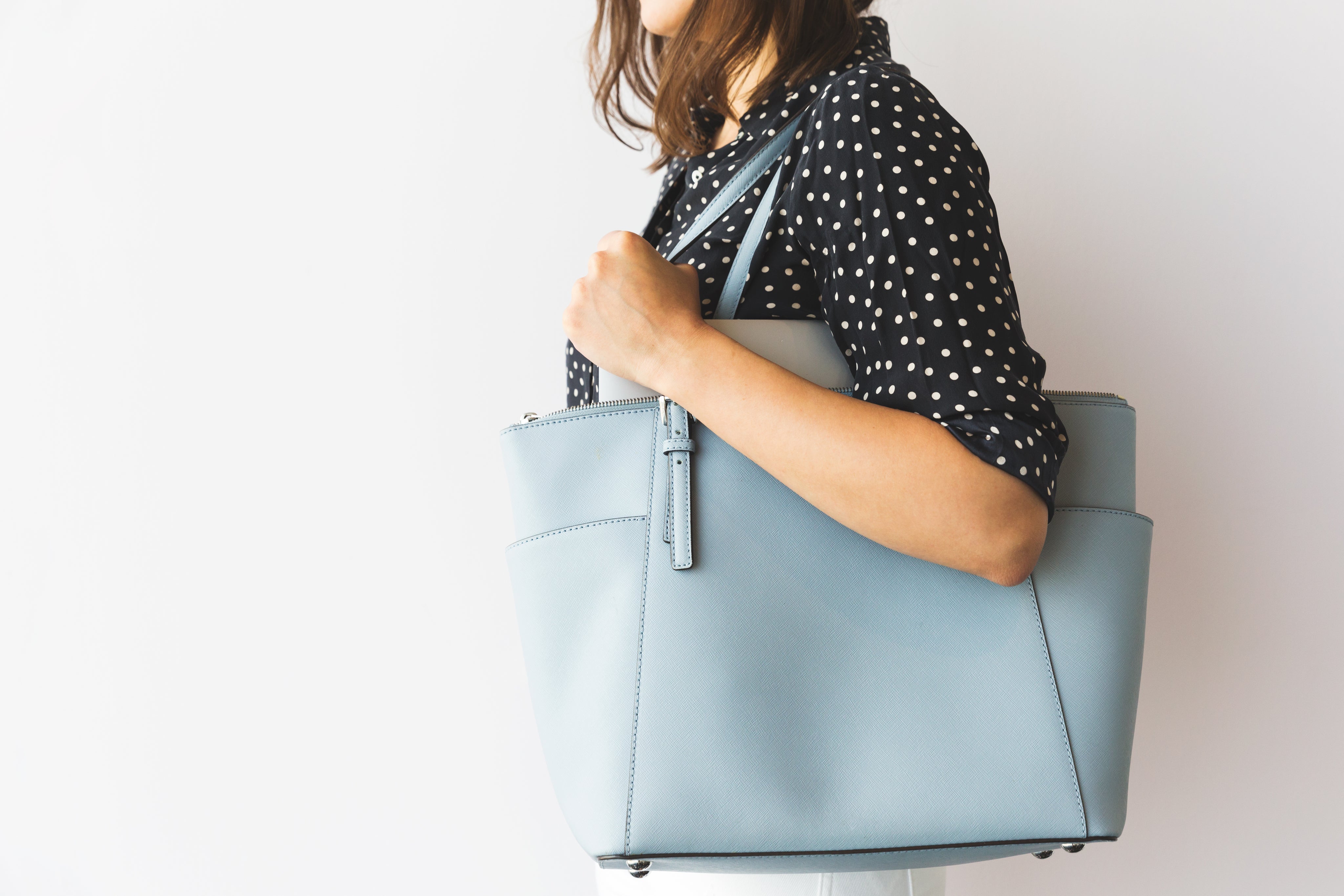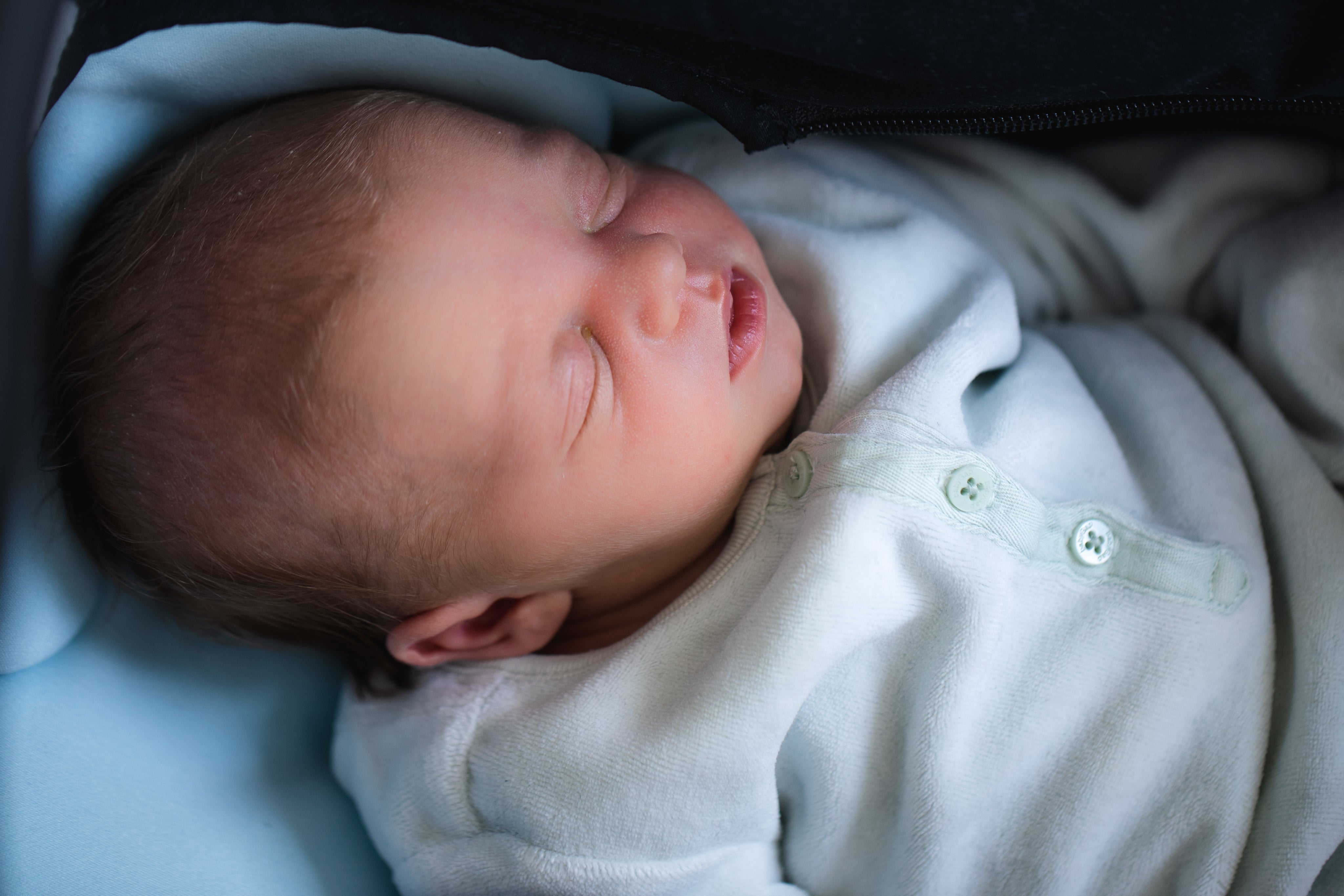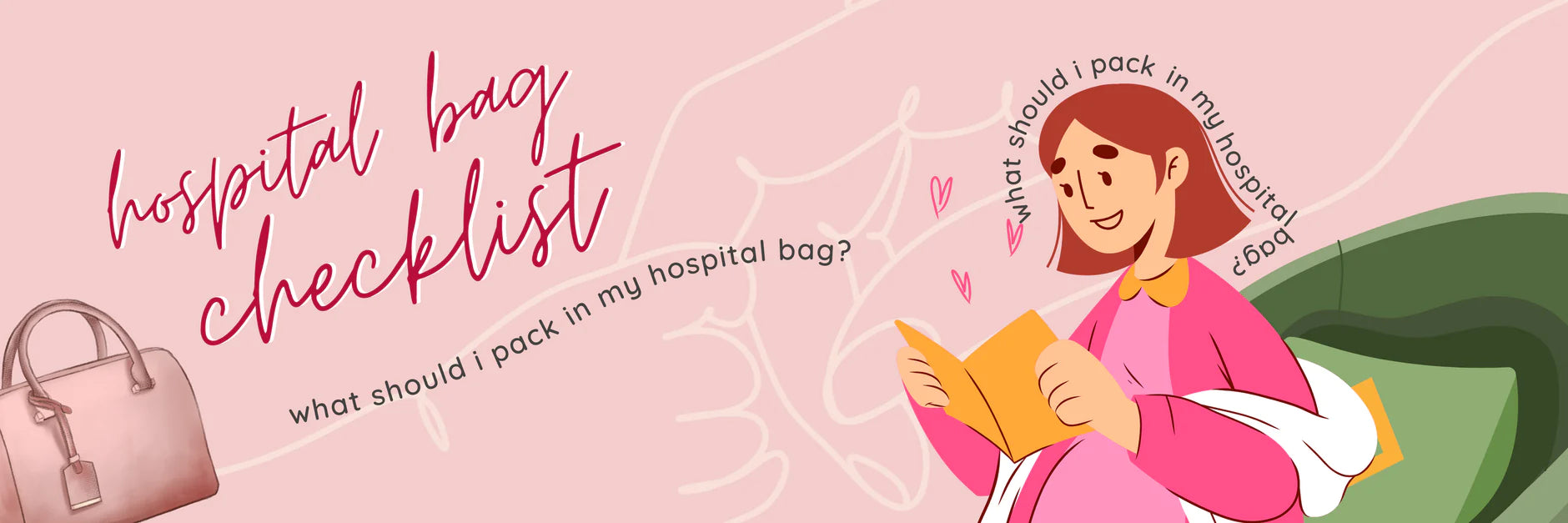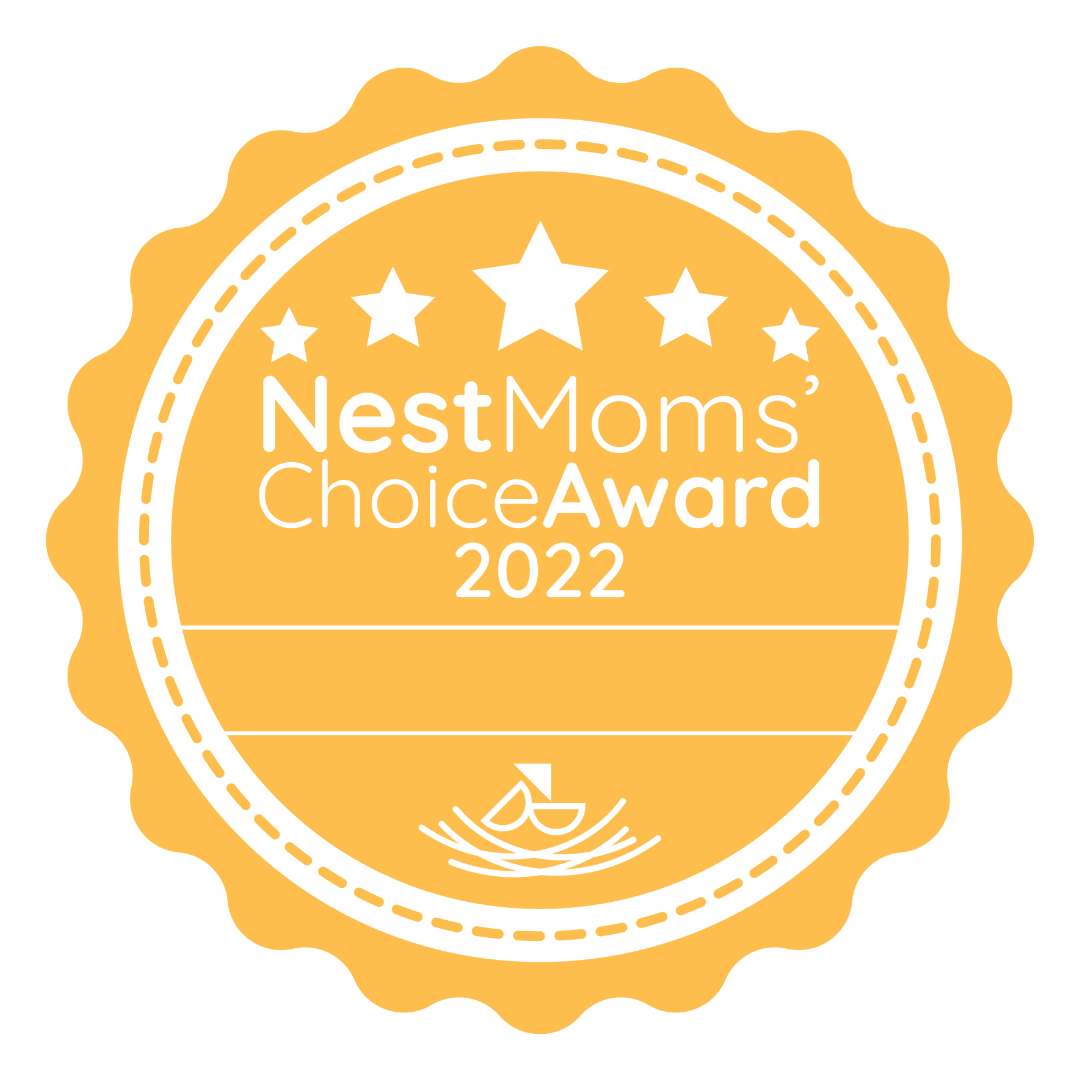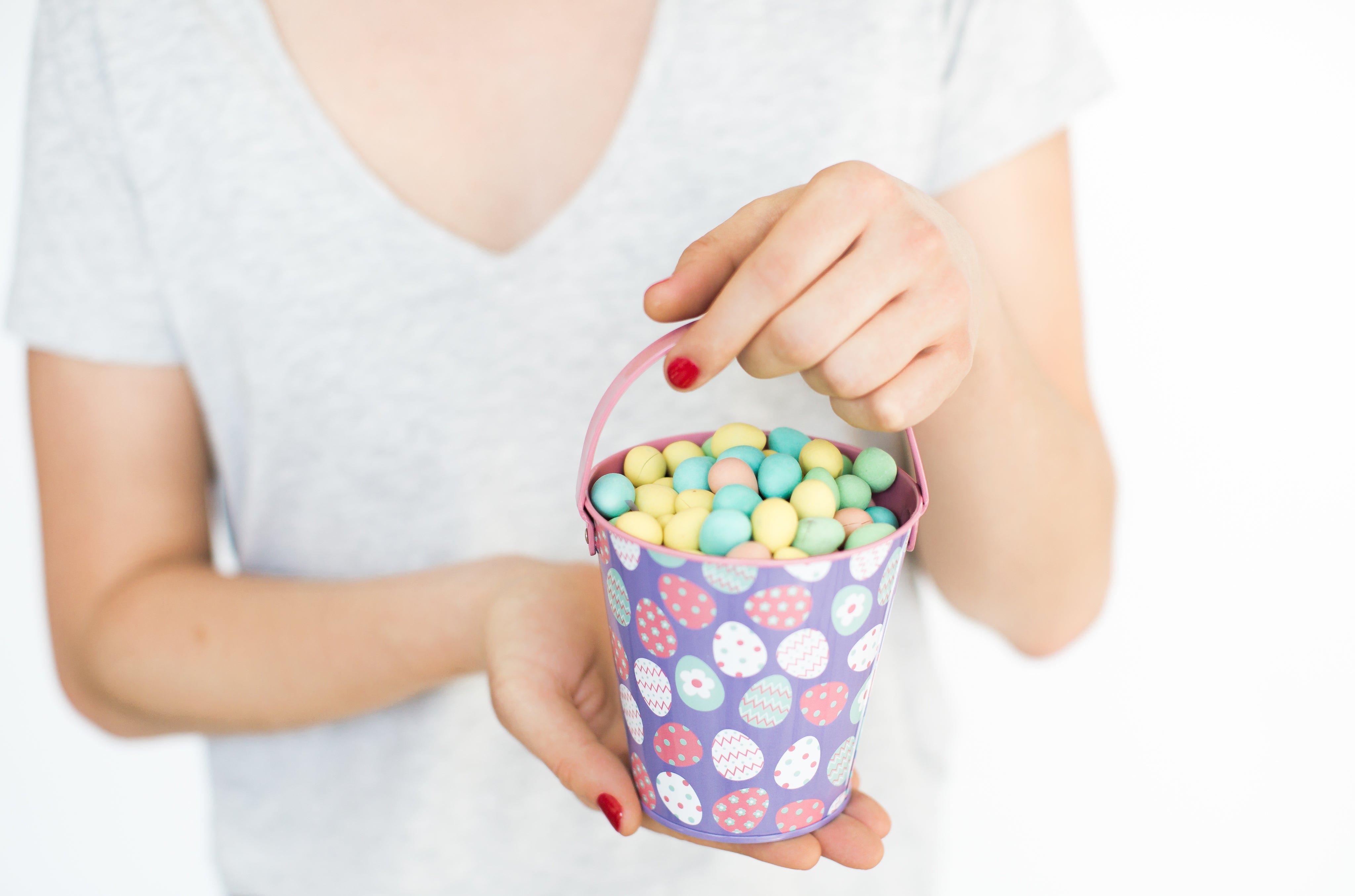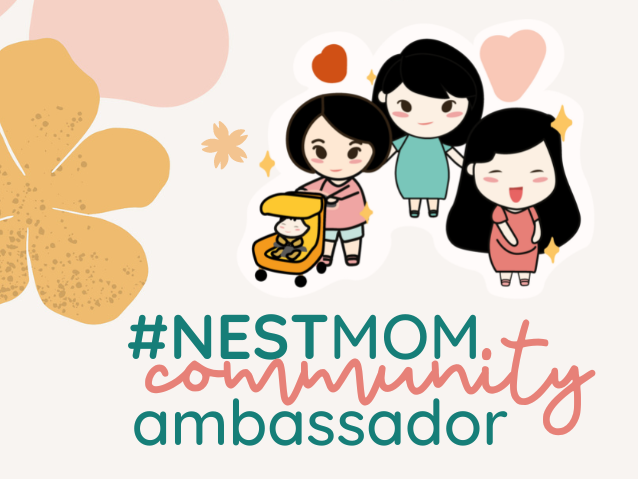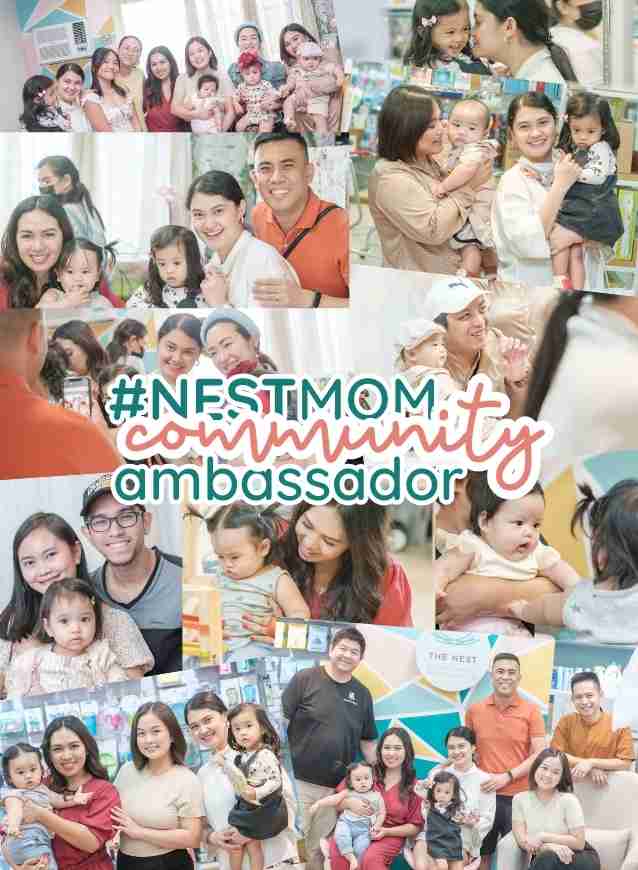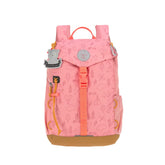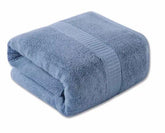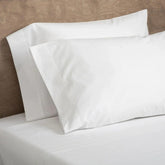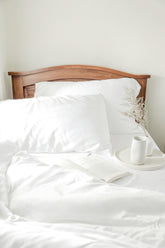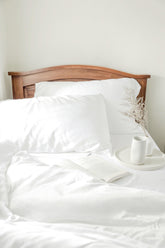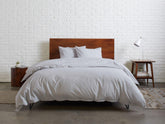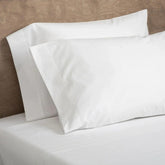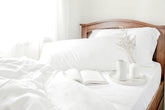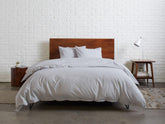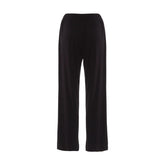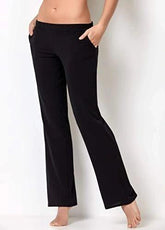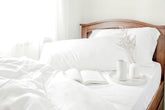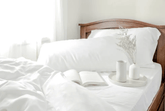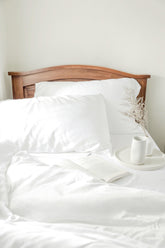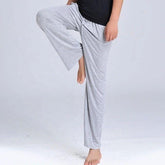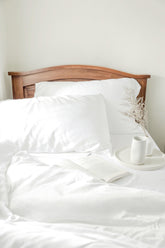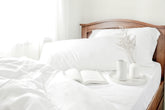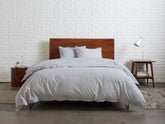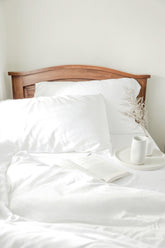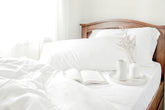Filter
24 results
20
- 10
- 15
- 20
- 25
- 30
- 50
Best selling
- Featured
- Best selling
- Alphabetically, A-Z
- Alphabetically, Z-A
- Price, low to high
- Price, high to low
- Date, old to new
- Date, new to old
Sort
Sort by:
- Featured
- Best selling
- Alphabetically, A-Z
- Alphabetically, Z-A
- Price, low to high
- Price, high to low
- Date, old to new
- Date, new to old
-
Vendor: Coza Home
Coza Bamboo Charcoal Basic Towel Set (3 pcs) - Azure blue
(1)Each set includes 1 bath towel, 1 hand towel, and 1 face wash towel A post-shower experience that you have ever dreamed of -Made of 100% bamboo charcoal fabric -Hypoallergenic -Lightweight/travel-friendly yet highly absorbent - Quick-drying Bath towel: 70x140cm Hand towel: 34x76cm Face towel:...- ₱1,650.00
- ₱1,650.00
- Unit price
- / per
-
Azure blue
-
Slate Green
-
Sakura Pink
-
White
-
Vendor: Coza Home
Coza Bamboo Lyocell Air Pillowcase Set King (2 pcs) - White
(0)King 20" x 40" Sold as a pair of pillowcases Features envelope closure - no pillows peeking out! Made of 100% premium lyocell bamboo fabric Wash cold, use mild detergent, no fabric softener, no bleach. Machine dry normal. GOODBYE, NIGHT SWEATS! Bamboo lyocell fabric...- ₱1,150.00
- ₱1,150.00
- Unit price
- / per
-
White
-
Moonbeam Gray
-
Soft Fern
-
Sand
- TerraCharcoal
-
Vendor: Coza Home
Coza Bamboo Charcoal Bath Towel (1pc) - Brown
(0)The post-shower experience that you have always dreamed of Made of 100% bamboo charcoal fabric Hypoallergenic Lightweight yet highly absorbent Quick-drying Bath towel: 70x140cm- ₱1,150.00
- ₱1,150.00
- Unit price
- / per
-
Brown
-
Pink
-
Green
-
Blue
-
Vendor: Coza Home
Coza Bamboo Lyocell AirSheets Deluxe Set King (4pc Set) - White
(1)Our uniquely woven 100% premium bamboo lyocell fabric is lightweight, durable, breathable and thermo-regulating. Goodbye, night sweats and hello to deeper sleep! Each set includes 1 fitted sheet, 1 flat sheet, and 2 King -size pillowcases King size: 78x80x16" Fitted sheet features all-around elastic...- ₱6,150.00
- ₱6,150.00
- Unit price
- / per
-
White
-
Moonbeam Gray
-
Soft Fern
-
Sand
- TerraCharcoal
-
Vendor: Coza Home
Coza Bamboo Lyocell AirSheets Deluxe Set Queen (4pc Set) - White
(1)Our uniquely woven 100% premium bamboo lyocell fabric is lightweight, durable, breathable and thermo-regulating. Goodbye, night sweats and hello to deeper sleep! Each set includes 1 fitted sheet, 1 flat sheet, and 2 pillowcases Queen size: 60x80x16" Fitted sheet features all-around elastic garter and...- ₱5,750.00
- ₱5,750.00
- Unit price
- / per
-
White
-
Moonbeam Gray
-
Soft Fern
-
Sand
- TerraCharcoal
-
Vendor: Coza Home
Coza Bamboo Lyocell AirSheets 3pc Set Queen (Preorder) - White
(0)Our uniquely woven 100% premium bamboo lyocell fabric is lightweight, durable, breathable and thermo-regulating. Goodbye, night sweats and hello to deeper sleep! Each set includes 1 fitted sheet and 2 Pillowcases. GOODBYE, NIGHT SWEATS! Bamboo lyocell fabric is naturally light and breathable, especially because...- ₱4,150.00
- ₱4,150.00
- Unit price
- / per
-
White
-
Moonbeam Gray
-
Soft Fern
-
Sand
- TerraCharcoal
-
Vendor: Coza Home
Coza Bamboo Lyocell Air Pillowcase Set Standard (2 pcs) - Terra
(0)Size: 20" x 30" Sold as a pair of pillowcases Features envelope closure - no pillows peeking out! Made of 100% premium lyocell bamboo fabric Wash cold, use mild detergent, no fabric softener, no bleach. Machine dry normal. GOODBYE, NIGHT SWEATS! Bamboo lyocell fabric...- ₱1,150.00
- ₱1,150.00
- Unit price
- / per
-
White
-
Moonbeam Gray
-
Soft Fern
-
Sand
- TerraCharcoal
-
Vendor: Coza Home
Coza Bamboo Lyocell Air Duvet Cover Set Queen (3 pcs) - White
(0)Made of 100% Premium Bamboo Lyocell Air Fabric, 320 bamboo thread count - Ultra-soft, hypoallergenic and very breathable - perfect for our humid climate - Machine-wash friendly (use cold and gentle cycle) - The set includes 1 duvet cover and 2 pillowcases - Can be...- ₱5,950.00
- ₱5,950.00
- Unit price
- / per
-
White
-
Moonbeam Gray
-
Soft Fern
-
Sand
- TerraCharcoal
-
Vendor: Coza Home
Coza Bamboo Lyocell AirSheets 3pc Set King (Preorder) - White
(1)Our uniquely woven 100% premium bamboo lyocell fabric is lightweight, durable, breathable and thermo-regulating. Goodbye, night sweats and hello to deeper sleep! Each set includes 1 fitted sheet and 2 Pillowcases. GOODBYE, NIGHT SWEATS! Bamboo lyocell fabric is naturally light and breathable, especially because...- ₱4,550.00
- ₱4,550.00
- Unit price
- / per
-
White
-
Moonbeam Gray
-
Soft Fern
-
Sand
- TerraCharcoal
-
Vendor: Coza Home
Coza Bamboo Lounge Pants (Men's) Black
(0)Upgrade your lounge game with our bamboo lounge pants Made of 95% premium bamboo fabric and 5% spandex - a perfect lightweight and super-soft combination you'll want to wear all day long Features an elastic waistband and pockets- ₱1,150.00
- ₱1,150.00
- Unit price
- / per
-
Vendor: Coza Home
Coza Bamboo Lounge Pants (Women's) Black
(1)Upgrade your lounge game with our bamboo lounge pants Made of 95% premium bamboo fabric and 5% spandex - a perfect lightweight and super-soft combination you'll want to wear all day long Features an elastic waistband and pockets- ₱1,150.00
- ₱1,150.00
- Unit price
- / per
-
Vendor: Coza Home
Coza Bamboo Lyocell Air Duvet Cover Set King (3 pcs) - White
(0)Made of 100% Premium Bamboo Lyocell Air Fabric, 320 bamboo thread count - Ultra-soft, hypoallergenic and very breathable - perfect for our humid climate - Machine-wash friendly (use cold and gentle cycle) - The set includes 1 duvet cover and 2 pillowcases - Can be...- ₱6,650.00
- ₱6,650.00
- Unit price
- / per
-
White
-
Moonbeam Gray
-
Soft Fern
-
Sand
- TerraCharcoal
-
Vendor: Coza Home
Coza Bamboo Lyocell AirSheets 3pc Set Queen w/ King Pillow Cases (Preorder) - White
(0)Our uniquely woven 100% premium bamboo lyocell fabric is lightweight, durable, breathable and thermo-regulating. Goodbye, night sweats and hello to deeper sleep! Each set includes 1 Queen sized fitted sheet and 2 King Sized Pillowcases. GOODBYE, NIGHT SWEATS! Bamboo lyocell fabric is naturally light...- ₱4,250.00
- ₱4,250.00
- Unit price
- / per
-
White
-
Moonbeam Gray
-
Soft Fern
-
Sand
- TerraCharcoal
-
Vendor: Coza Home
Coza Bamboo Lyocell AirSheets 3pc Set California King (Preorder) - White
(0)Our uniquely woven 100% premium bamboo lyocell fabric is lightweight, durable, breathable and thermo-regulating. Goodbye, night sweats and hello to deeper sleep! Each set includes 1 fitted sheet and 2 Pillowcases. California King size: 210x220cm; 11" pocket size Pillow Case: 37x19" Fitted sheet features all-around...- ₱4,850.00
- ₱4,850.00
- Unit price
- / per
-
White
-
Moonbeam Gray
-
Soft Fern
-
Sand
- TerraCharcoal
-
Vendor: Coza Home
Coza Bamboo Lounge Pants (Men's) Gray
(0)Upgrade your lounge game with our bamboo lounge pants Made of 95% premium bamboo fabric and 5% spandex - a perfect lightweight and super-soft combination you'll want to wear all day long Features an elastic waistband and pockets- ₱1,150.00
- ₱1,150.00
- Unit price
- / per
-
Vendor: Coza Home
Coza Bamboo Lyocell AirSheets Ultra Set King (7pc Set) Preorder - White
(0)Our uniquely woven 100% premium bamboo lyocell fabric is lightweight, durable, breathable and thermo-regulating. Goodbye, night sweats and hello to deeper sleep! This set brings together all our bedding basics at the best bundle price: 1 fitted sheet, 1 flat sheet, 1 duvet cover...- ₱11,350.00
- ₱11,350.00
- Unit price
- / per
-
White
-
Moonbeam Gray
-
Soft Fern
-
Sand
- TerraCharcoal
-
Vendor: Coza Home
Coza Bamboo Lyocell AirSheets 3pc Set Semi Double (Preorder) - White
(0)Our uniquely woven 100% premium bamboo lyocell fabric is lightweight, durable, breathable and thermo-regulating. Goodbye, night sweats and hello to deeper sleep! Each set includes 1 fitted sheet (48x75") and 2 Pillowcases. GOODBYE, NIGHT SWEATS! Bamboo lyocell fabric is naturally light and breathable, especially...- ₱3,950.00
- ₱3,950.00
- Unit price
- / per
-
White
-
Moonbeam Gray
-
Soft Fern
-
Sand
- TerraCharcoal
-
Vendor: Coza Home
Coza Bamboo Lyocell AirSheets 3pc Set Full/Double (Preorder) - White
(0)Our uniquely woven 100% premium bamboo lyocell fabric is lightweight, durable, breathable and thermo-regulating. Goodbye, night sweats and hello to deeper sleep! Each set includes 1 fitted sheet and 2 Pillowcases. GOODBYE, NIGHT SWEATS! Bamboo lyocell fabric is naturally light and breathable, especially because...- ₱3,750.00
- ₱3,750.00
- Unit price
- / per
-
White
-
Moonbeam Gray
-
Soft Fern
-
Sand
- TerraCharcoal
-
Vendor: Coza Home
Coza Bamboo Lyocell AirSheets 3pc Set Single/Twin (Preorder) - White
(0)Our uniquely woven 100% premium bamboo lyocell fabric is lightweight, durable, breathable and thermo-regulating. Goodbye, night sweats and hello to deeper sleep! Each set includes 1 fitted sheet and 2 Pillowcases. GOODBYE, NIGHT SWEATS! Bamboo lyocell fabric is naturally light and breathable, especially because...- ₱3,350.00
- ₱3,350.00
- Unit price
- / per
-
White
-
Moonbeam Gray
-
Soft Fern
-
Sand
- TerraCharcoal
-
Vendor: Coza Home
Coza Bamboo Lyocell Air Duvet Cover Set Double/Full (3 pcs) - White
(0)Made of 100% Premium Bamboo Lyocell Air Fabric, 320 bamboo thread count - Ultra-soft, hypoallergenic and very breathable - perfect for our humid climate - Machine-wash friendly (use cold and gentle cycle) - The set includes 1 duvet cover and 2 pillowcases - Can be...- ₱5,250.00
- ₱5,250.00
- Unit price
- / per
-
White
-
Moonbeam Gray
-
Soft Fern
-
Sand
- TerraCharcoal



